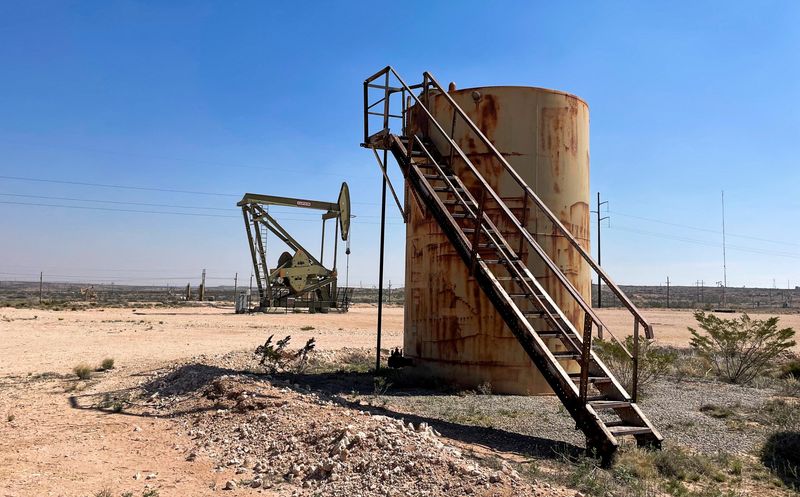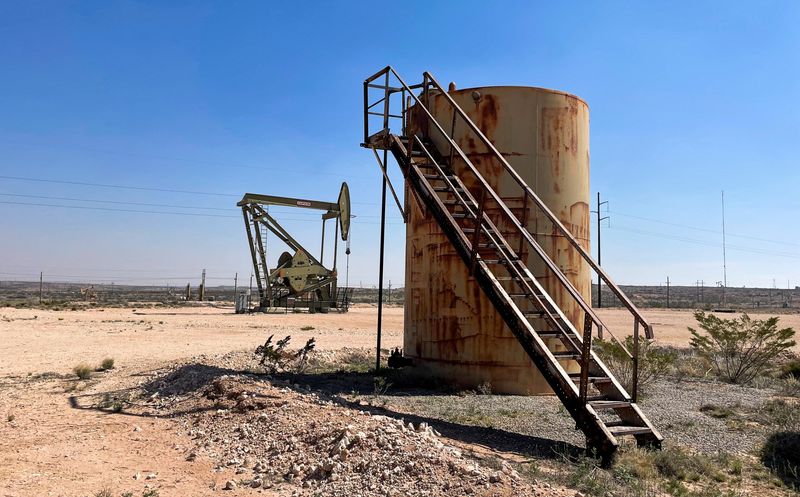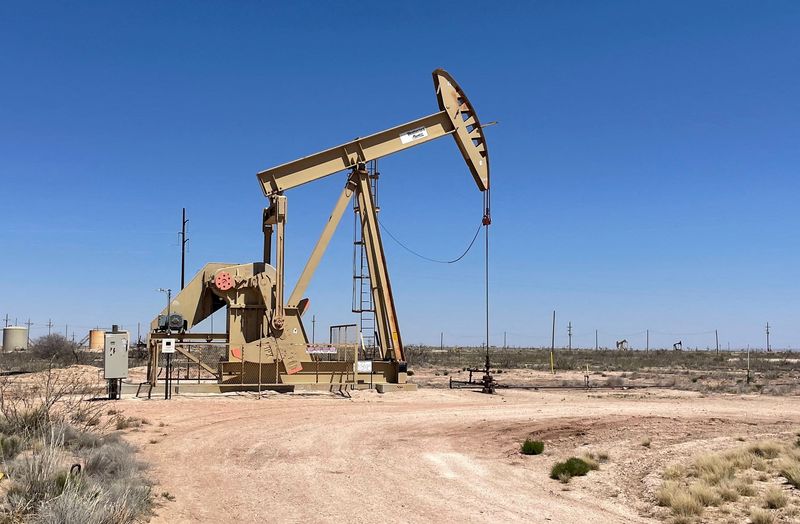Commodities
New Mexico studies oil drilling restrictions that would hit output, revenue

By Georgina McCartney
NEW YORK (Reuters) -A top economist for the state of New Mexico, the second-largest oil-producer in the U.S., this week released a study on potential drilling restrictions that could hit up to 5.4% of its future crude output and result in billions of dollars in lost revenue.
The study evaluated setback proposals from the 2024 legislative session, which would restrict how close operators can drill to certain structures and environmental areas. They are intended to protect the public from oil and gas pollution.
“The topic is complicated and required more time to evaluate and analyze than what was provided during the session. This presentation was to provide the committee with further analysis,” said Ismael Torres, chief economist at New Mexico’s Legislative Finance Committee.
“It is too early to know what, if any, setbacks will be proposed in the upcoming session,” he added.
The setbacks evaluated in the report would take effect in 2026 and would affect 15% of new wells in the state, of which about a third would be lost, according to Torres.
That would amount to roughly 12.5 million barrels of oil output lost in the first year, and around 35 million barrels by the early 2030s.
Production value lost would peak at around $4.5 billion annually by 2034.
New Mexico houses portions of the prolific Permian shale field, which also crosses into Texas. The state was producing some 2.04 million barrels per day in July, according to the most recent data from the U.S. Energy Information Administration.
The report estimates more than half of the affected wells are on private land, a quarter of which are in Lea County, one of the fastest-growing oil-producing counties in the United States.
“A statewide setback would not accomplish increased mitigation of human health effects from oil and gas production, but it would be a detriment to the continued development of oil and gas resources and, ultimately, the State of New Mexico,” said Missi Currier, chief executive officer of the New Mexico Oil & Gas Association industry group.
The report was presented to the state’s Legislative Finance Committee on Tuesday.
The setbacks evaluated in the report would prevent operators from drilling within 2,250 feet (686 m) of most residential, education, health or correctional institutions, and halt drilling 650 feet from streams, lakes, ponds, wetlands, or irrigation infrastructure.
It would limit activity within 300 feet of all other surface water.

“The cost to human health and our natural resources far outweigh whatever revenue would be lost to the state,” said Charlie Barrett, a New Mexico environmental advocate and thermographer at the environmental group Earthworks.
“Setbacks are critical to protecting communities, schools and businesses,” he added.
Commodities
Oil prices rise; U.S. crude inventories plunge, Russia-Ukraine truce eyed
Commodities
India’s Reliance to stop buying Venezuelan oil over US tariffs, sources say
Commodities
Oil prices climb on Venezuela supply worries

 Forex3 years ago
Forex3 years agoForex Today: the dollar is gaining strength amid gloomy sentiment at the start of the Fed’s week

 Forex3 years ago
Forex3 years agoUnbiased review of Pocket Option broker

 Forex3 years ago
Forex3 years agoDollar to pound sterling exchange rate today: Pound plummeted to its lowest since 1985

 Forex3 years ago
Forex3 years agoHow is the Australian dollar doing today?

 Cryptocurrency3 years ago
Cryptocurrency3 years agoWhat happened in the crypto market – current events today

 World3 years ago
World3 years agoWhy are modern video games an art form?

 Commodities3 years ago
Commodities3 years agoCopper continues to fall in price on expectations of lower demand in China

 Economy3 years ago
Economy3 years agoCrude oil tankers double in price due to EU anti-Russian sanctions

























